Do yourself a favor and visit Seven Magic Mountains, a vibrant desert art installation, on your way to Las Vegas. You won’t regret it.
Last updated: September 11, 2025
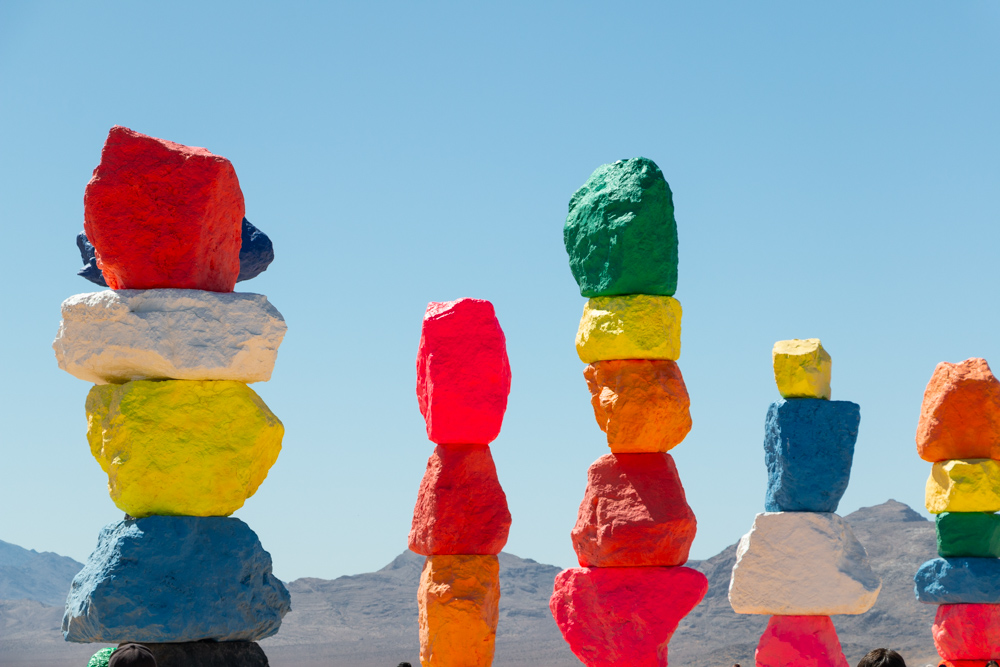
Seven Magic Mountains – a Quick Day Trip from Las Vegas
Las Vegas’s hot spot. Rainbow magic. A poetic burst of forms and colors… Seven Magic Mountains is a primary destination to visit in Nevada for all art enthusiasts. Nestled near Las Vegas, the colorful installation has stirred up interest since 2016. People from all walks of life visit Seven Magic Mountains to invigorate their senses, get inspired, and derive their creativity from the unity of art and desert.
The colorful boulders that the artwork consist of look tiny from Interstate 15, where the majority of the visitors catch the first glimpse of the site. But once you get closer, the large-scale public art installation overpowers, making you look like an ant (ok, a giant ant) standing next to one of these neon-color pillars.
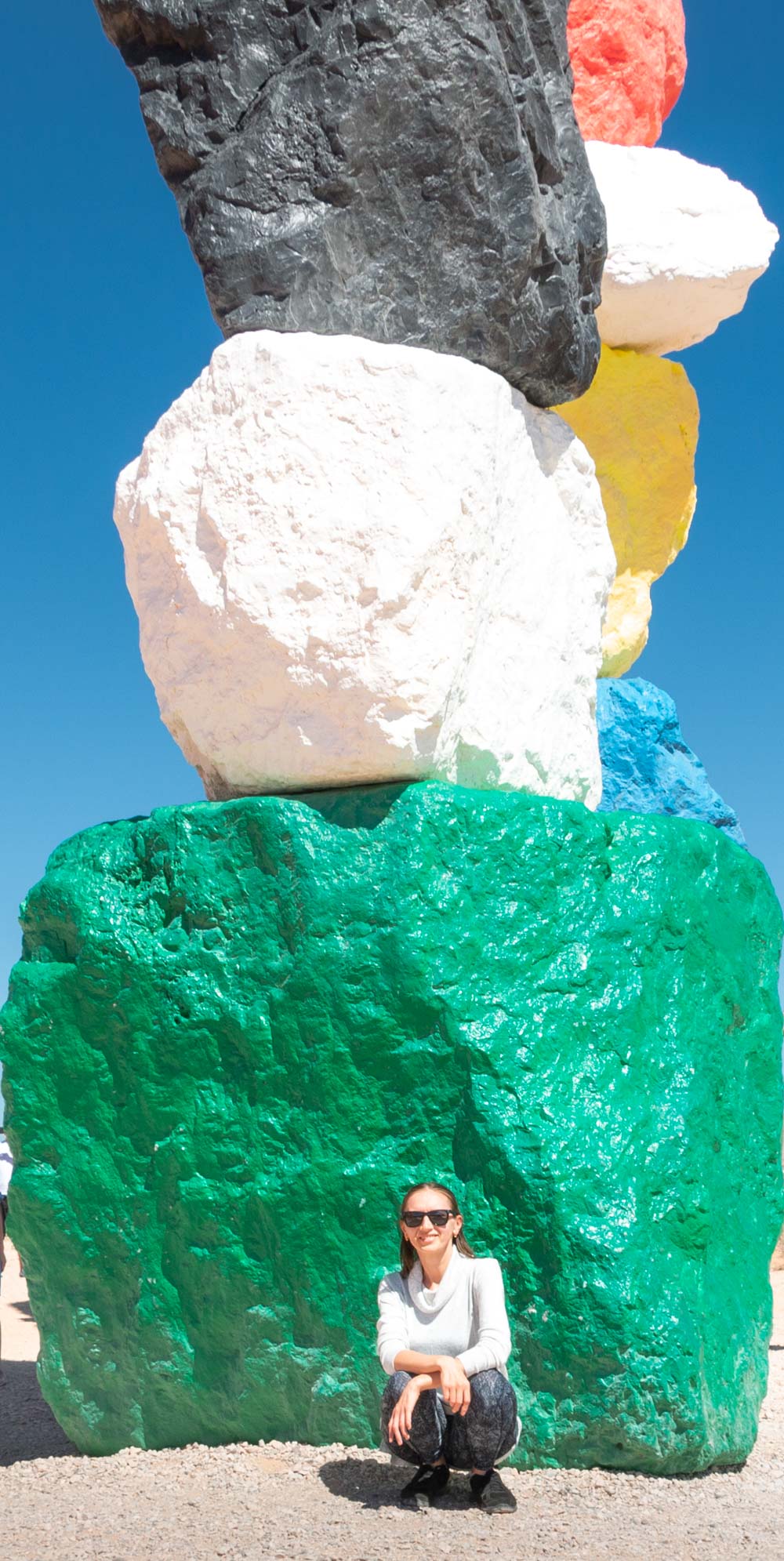
Meet the Artwork
The grand installation near Las Vegas first took the world by surprise in 2016. As the name suggests, the artwork consists of seven mountains or towers. Each tower comprises several massive boulders, painted in different colors and stretching their peaks to the sky in the middle of nowhere. Some call them totems, others stick to the original name, “mountains“.
So what is the Seven Magic Mountains installation? The artwork comprises seven poles of painted, stacked, locally-sourced boulders that reach 30 to 35 feet in height. While some totems contain three large boulders, others consist of up to six smaller limestone rocks. Each stone is painted in different fluorescent colors.
Despite its rather artificial appearance, Seven Magic Mountains drew its inspiration from naturally occurring hoodoos and balancing rock formations. Artist, Ugo Rondinone, added a burst of color to natural materials to express an undivided connection between humans and nature. People befriended the desert a long time ago, and now their presence is symbolized in this bizarre artwork.
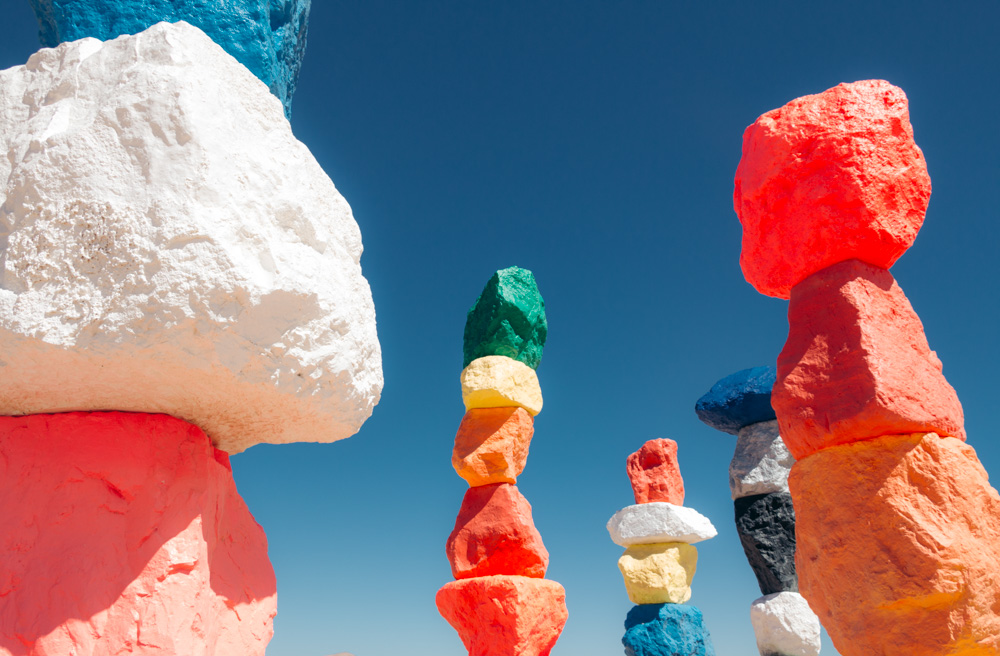
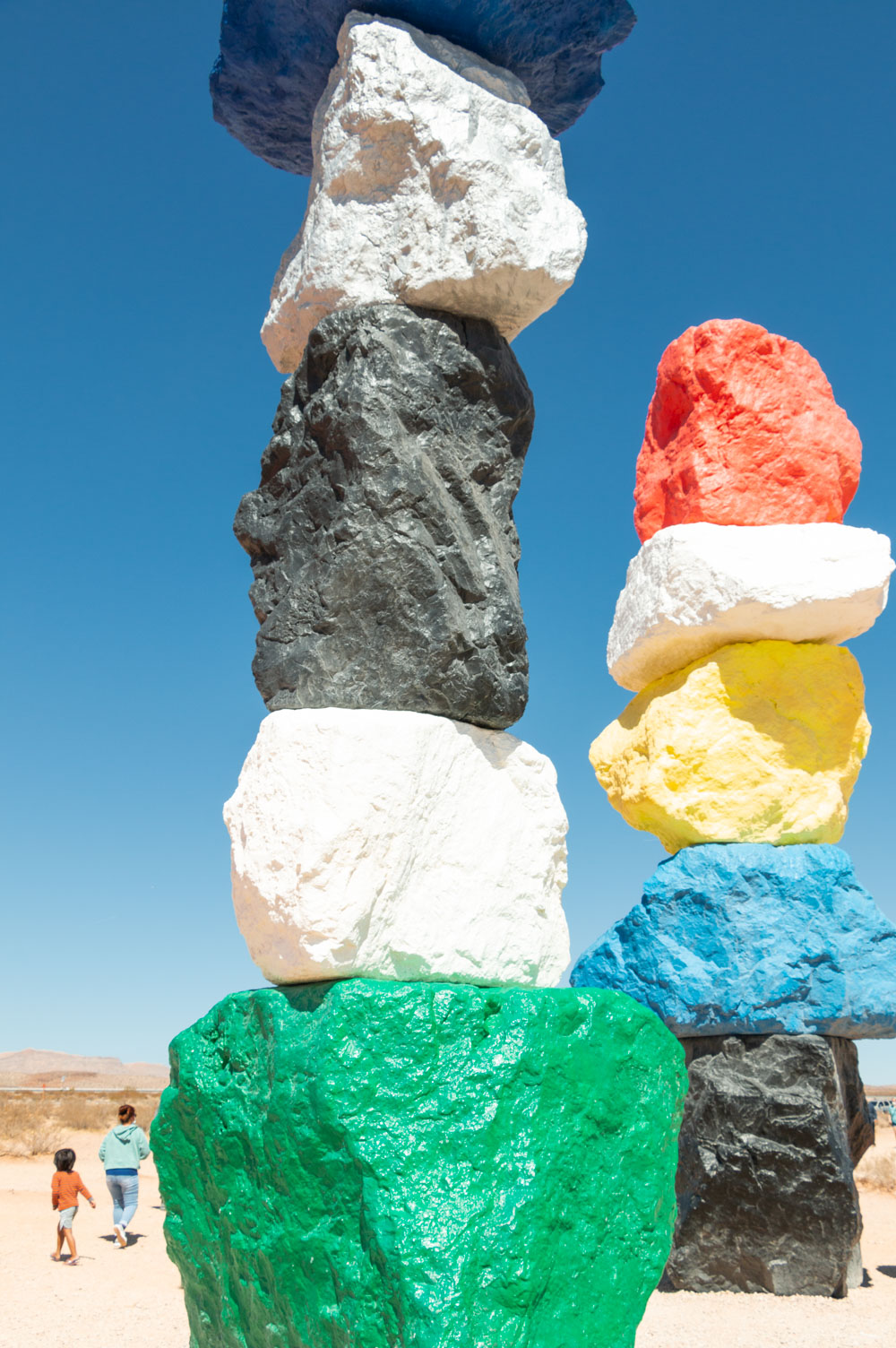
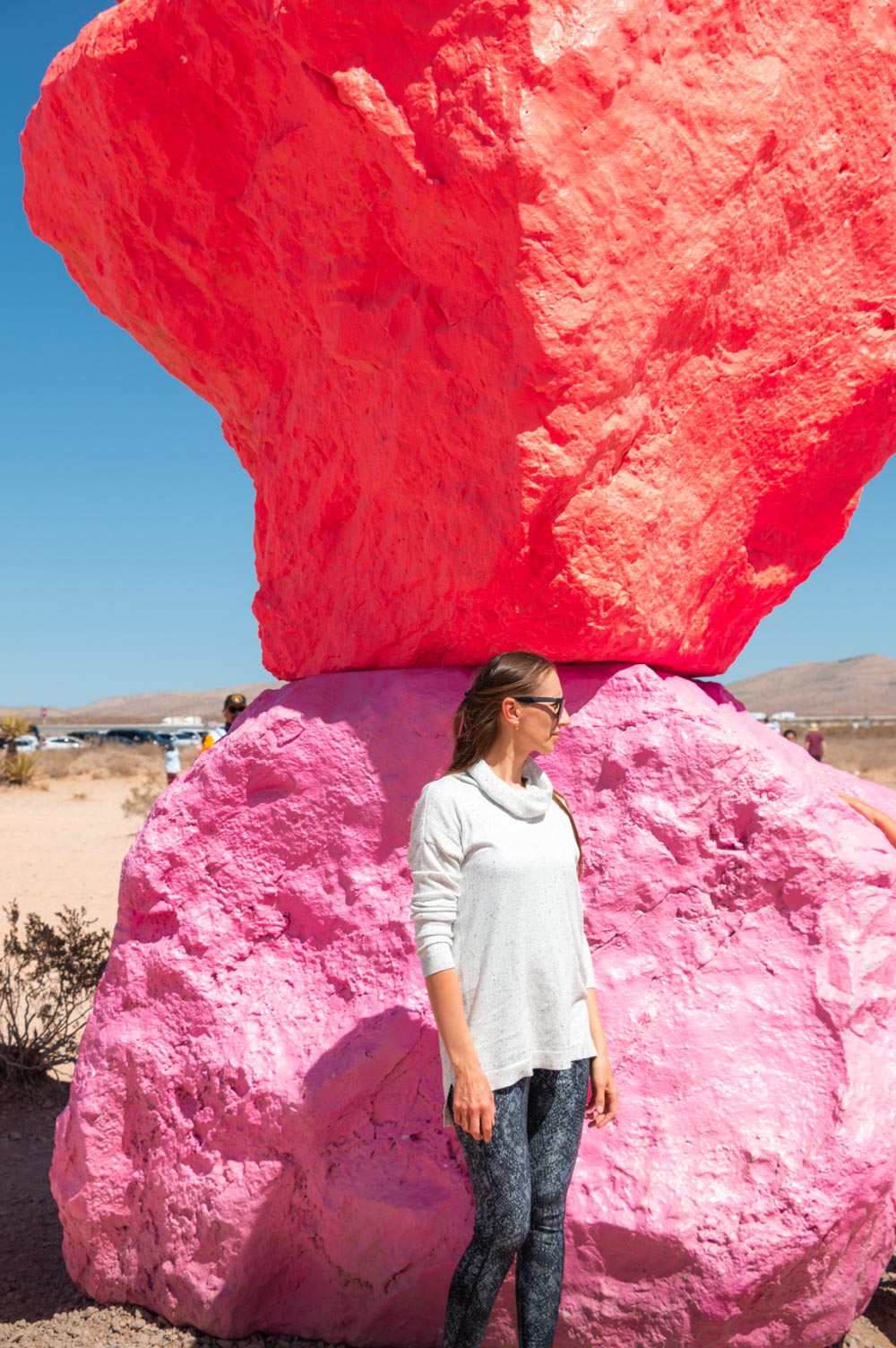
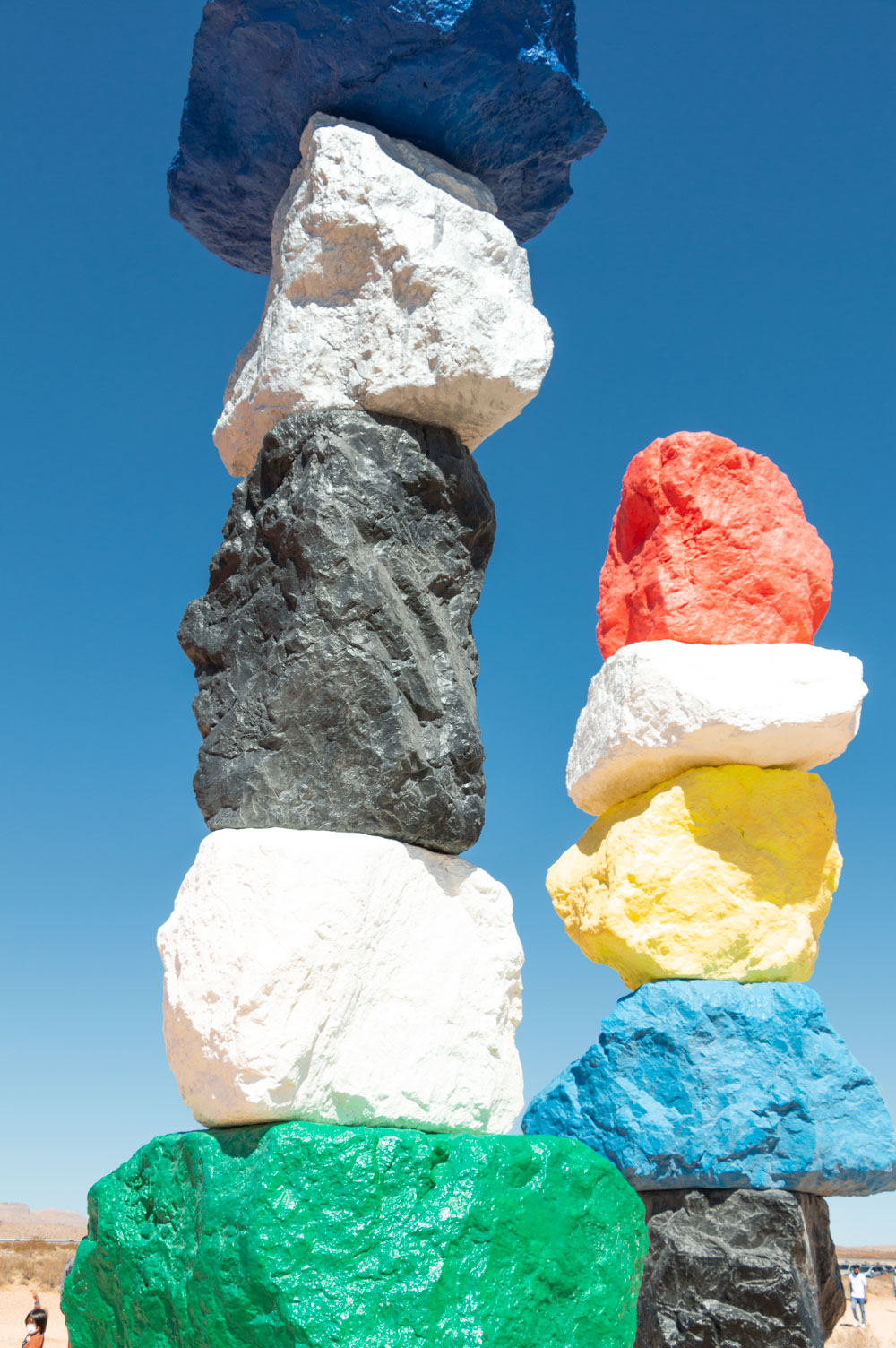
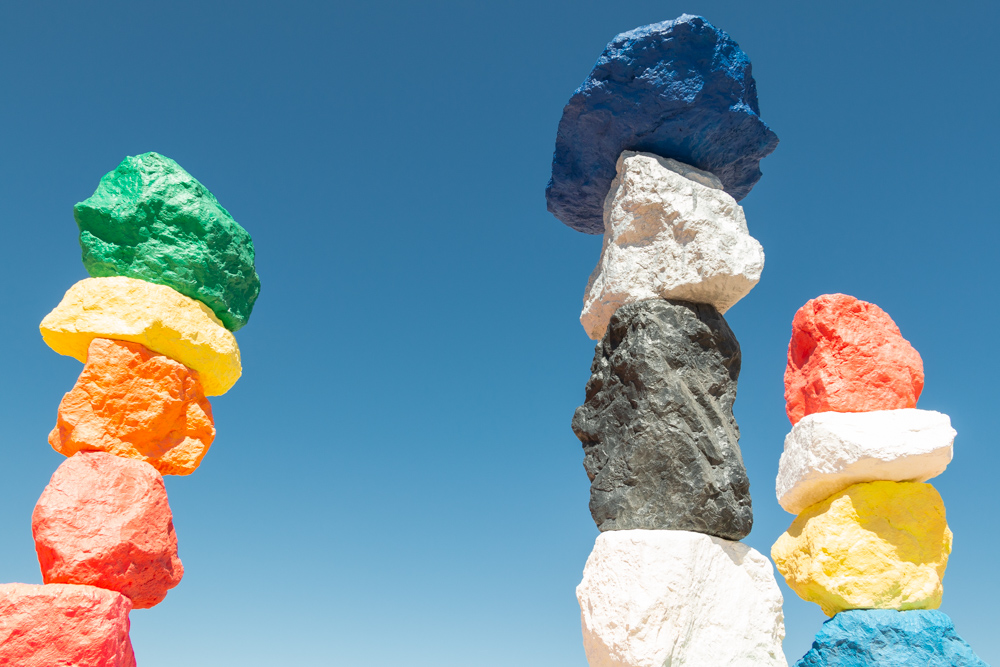
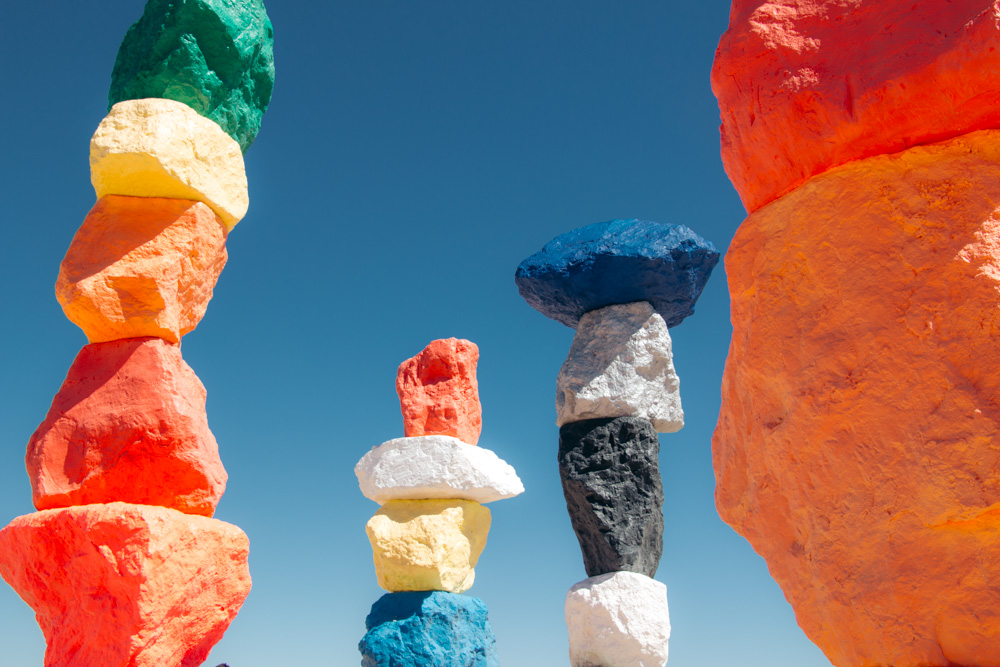
The Story of Seven Magic Mountains
Seven Magic Mountains is a creation of the internationally renowned artist Ugo Rondinone. Born in Brunnen, Switzerland, the artist is known for its ability to channel into the complicated relationship between people and nature. From eccentric designs to unusual locations, nothing in his creative process, including installation of the famous Nevada’s artwork, is spontaneous.
Just a few years ago, there were no Seven Magic Mountains or any other prominent sites to see in this part of the state. The place was barren but never forsaken.
A grandiose installation drew more people to the desert near Las Vegas only on May 11, 2016. Thousands of visitors flocked to the newly-opened artwork. Every new media release, every visit to Seven Magic Mountains stirred up interest among art enthusiasts. Soon, people all over the world talked about this odd installation.
While the colorful totems seemed to appear overnight, the whole creative process took more than four years. From obtaining a permit and working on specific engineering modalities that would keep the structures stable, the artist, who by that time had relocated to New York, and producers, the Nevada Museum of Art and Art Production Fund, had a long way to go.
Permit and Extension
According to the original plan, Seven Magic Mountains would be on display for two years. With no admission fees, anybody could visit Seven Magic Mountains and interpret the artist’s idea in her or his own way. According to Rondinone, the installation would evoke the unity between humans and nature, artificial and natural, past and present.
Yet neither the artist nor the producers expected such an overwhelming success. The longer Seven Magic Mountains existed, the more locals and travelers stopped to admire it. Inspired by this interest, Ugo strived to keep the installation on view at its current location.
At the end of 2018, the Bureau of Land Management issued a three-year permit extension. According to it, the art enthusiasts could visit Seven Magic Mountains through the end of 2021. As of summer of 2025, the neon desert installation is still festoons the desert some 30 minutes away from Las Vegas.
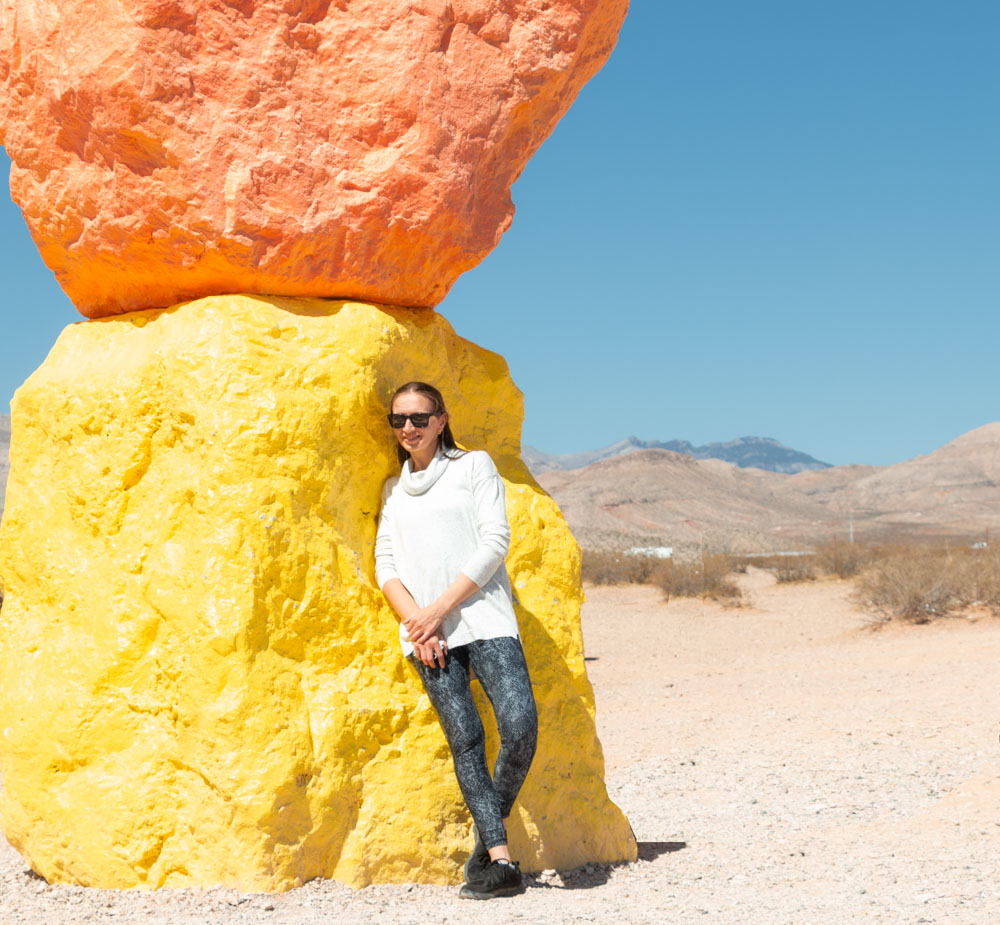
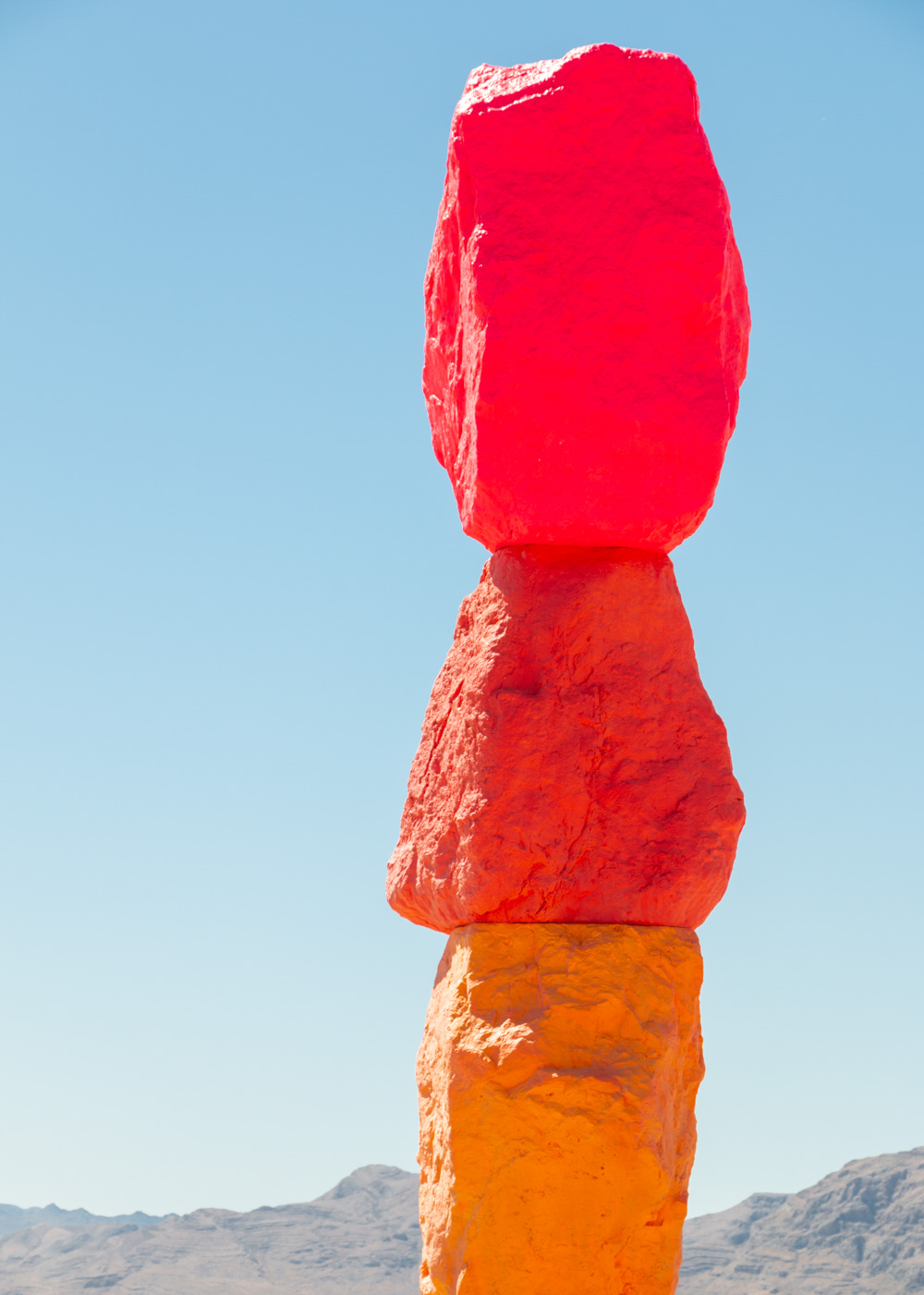
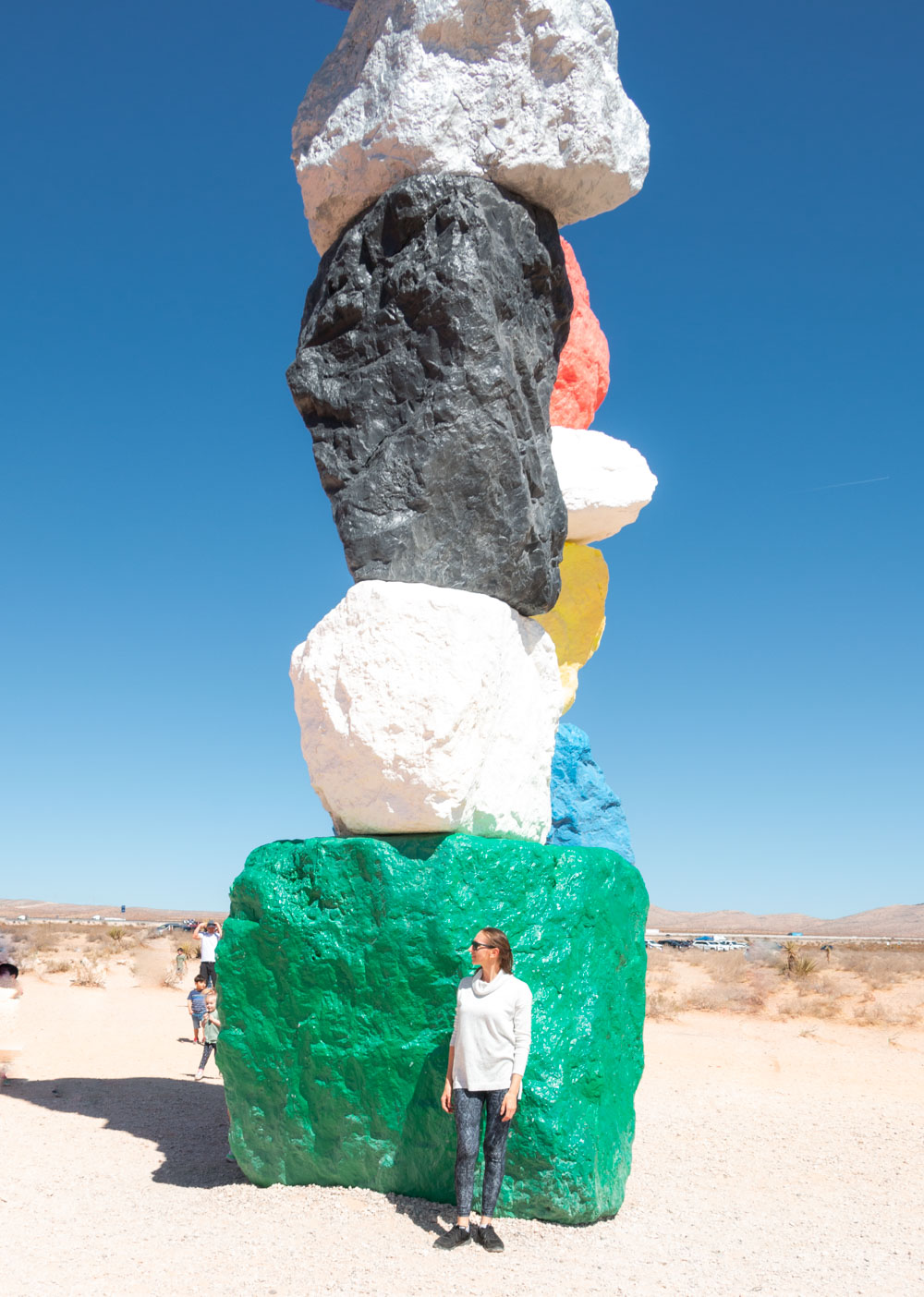
Why Do You Need to Visit Seven Magic Mountains
1. Extension of Human Intervention in the Desert
While the location of the installation may look random for oblivious visitors, the area has a long history of human intervention. Seven Magic Mountains is nestled near Jean Dry Lake, a place that housed a couple of other famous artworks.
The first human intervention occurred in 1962. Fed up with the absurdity of consumer culture, Swiss painter and kinetic sculptor Jean Tinguely chose this place for his sculpture/event that blew itself up.
Unlike its contemporary relative, Seven Magic Mountains, the first installation, Study for an End of the World No. 2, festooned the area for a very short time. Yet it succeeded at showing the devastating effect of the atomic testing that took place on Yucca and Frenchman Lake.
Six years later, in 1968, Michael Heizer in collaboration with artist Nancy Holt and her husband Robert Smithson created their own artwork, Rift 1. This time, more people could enjoy the ephemeral zigzag trench about a foot deep near Jean Dry Lake. Yet the number of the art lovers wasn’t even close to the number of people that visit Seven Magic Mountains today.
2. Symbol of Nevada’s Art
If you believe that Las Vegas is the only place worth visiting in Nevada, think again. The Gambling Capital of the World indeed amuses with its dazzling shows and the prettiest hotel lobbies. On the other hand, the city astounds with its rising interest in the arts. Numerous art museums and galleries pop up in different parts of Las Vegas.
Thus, it doesn’t come as a surprise anymore that many travelers flock to the City of Lights not to gamble, but to plunge into its artistic heritage. For these globetrotters, a visit to Seven Magic Mountains is a sought-after pursuit that further unveils the state’s rediscovered love of aesthetic pleasure.
3. Unmatched Day Trip from Las Vegas
Whether you love or loathe art, a visit to Seven Magic Mountains gives you a chance to see something new. And it’s just a short road trip from Las Vegas.
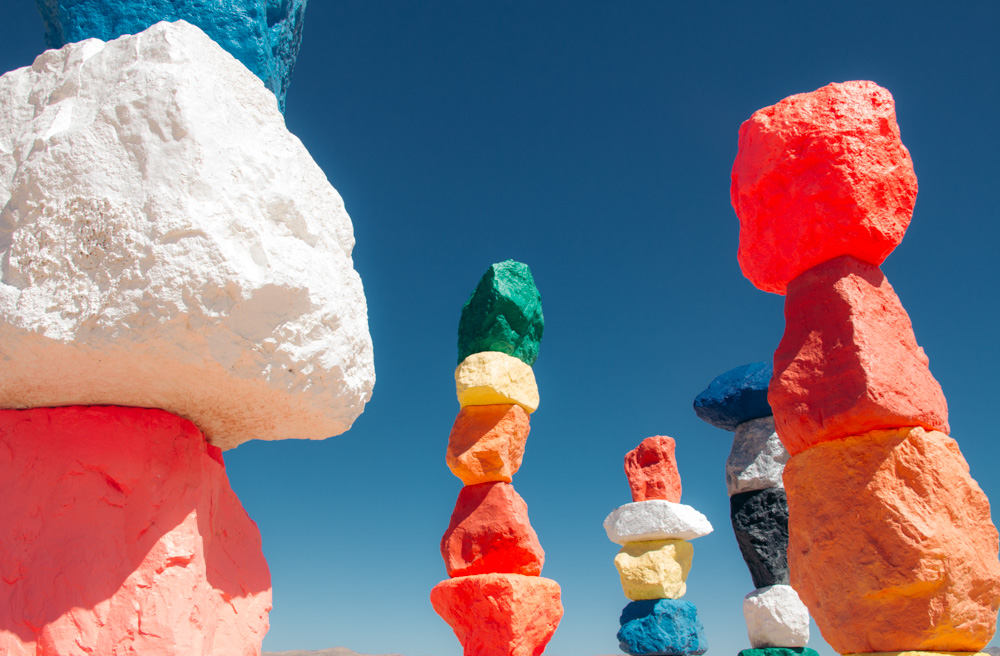
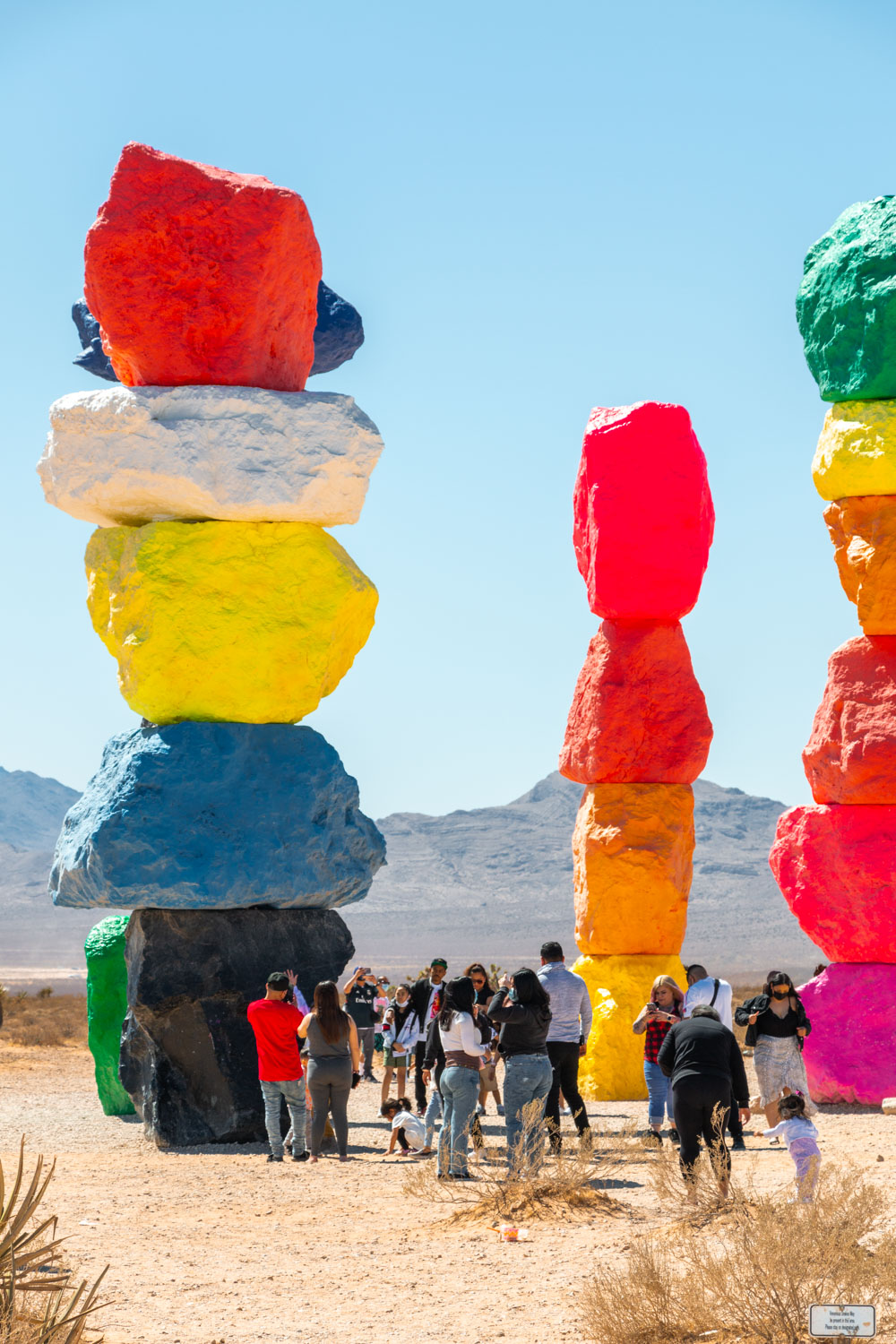
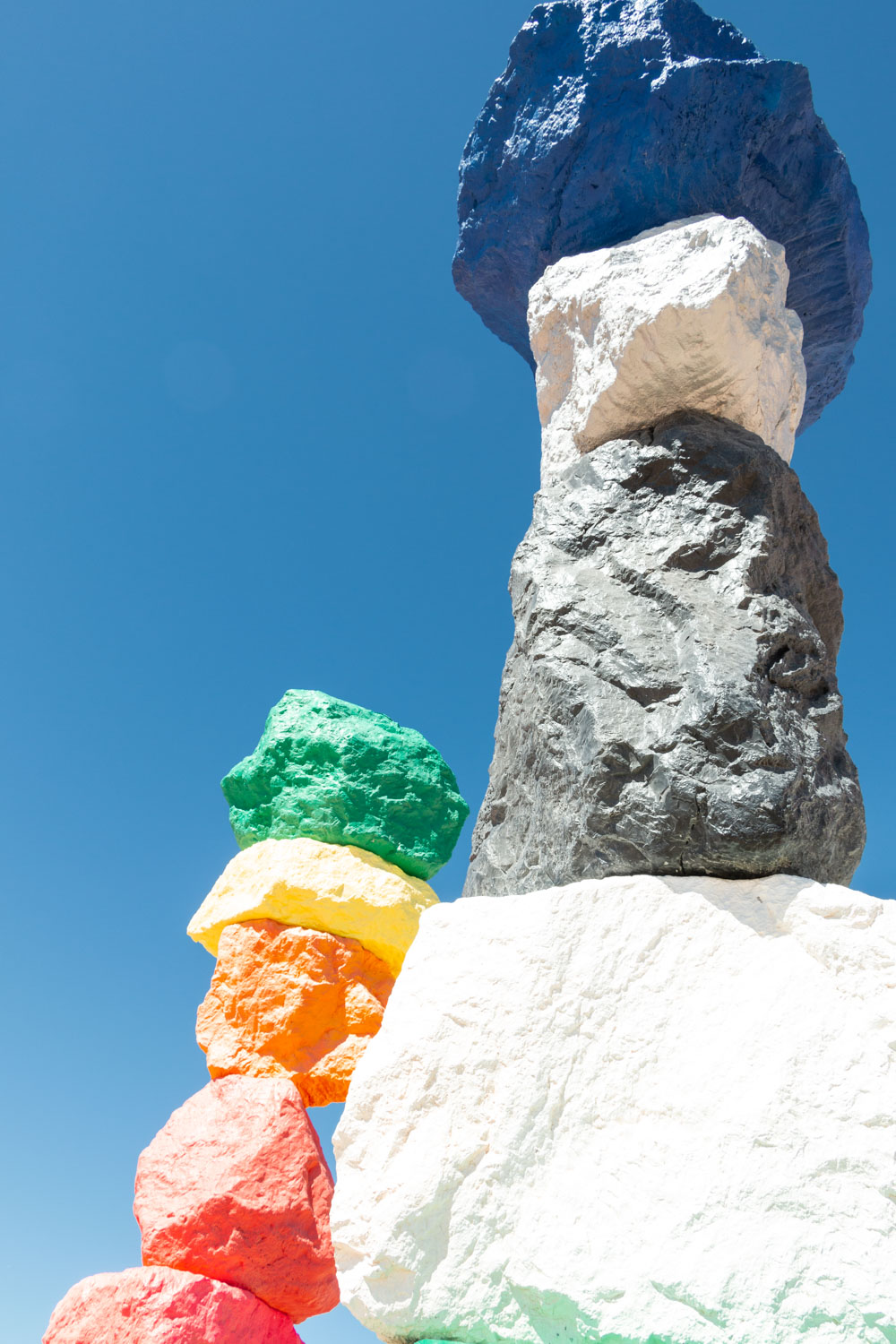
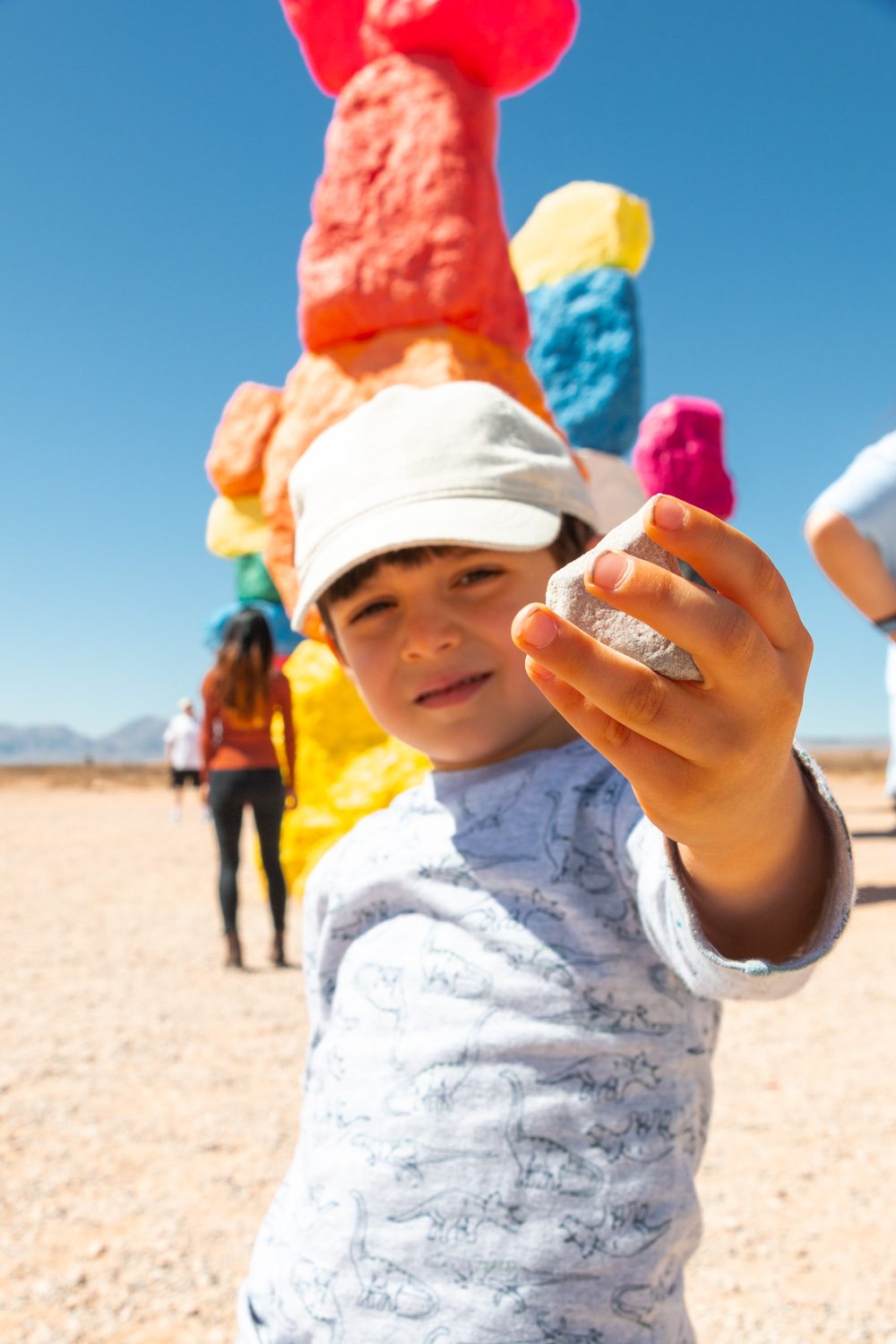
Location
The easiest way to visit Seven Magic Mountains is by flying into Las Vegan and embarking on a 30-minute road trip. The artwork sits near Jean Dry Lake and Interstate 15, about 26 miles south of Las Vegas.
How to Get to Seven Magic Mountains
Although some visitors of Seven Magic Mountains may question the choice of location, no one can deny its easy accessibility. The grand installation is nestled in the Nevada desert relatively far from civilization, yet so close to the bustling highway, a primary route for people traveling between Los Angeles and Las Vegas.
- To visit Seven Magic Mountains from Las Vegas, follow I-15 S for about 18 miles until it meets Sloan Road. Take exit 25, turn left, and continue on along Las Vegas Boulevard for nearly 8 miles until you reach the installation.
- To visit Seven Magic Mountains from Los Angeles, drive north on I-15 to Jean, Nevada. Take exit 12 and continue on along NV-161 toward Las Vegas Boulevard. Take a left turn and follow Las Vegas Boulevard for about 5 miles.
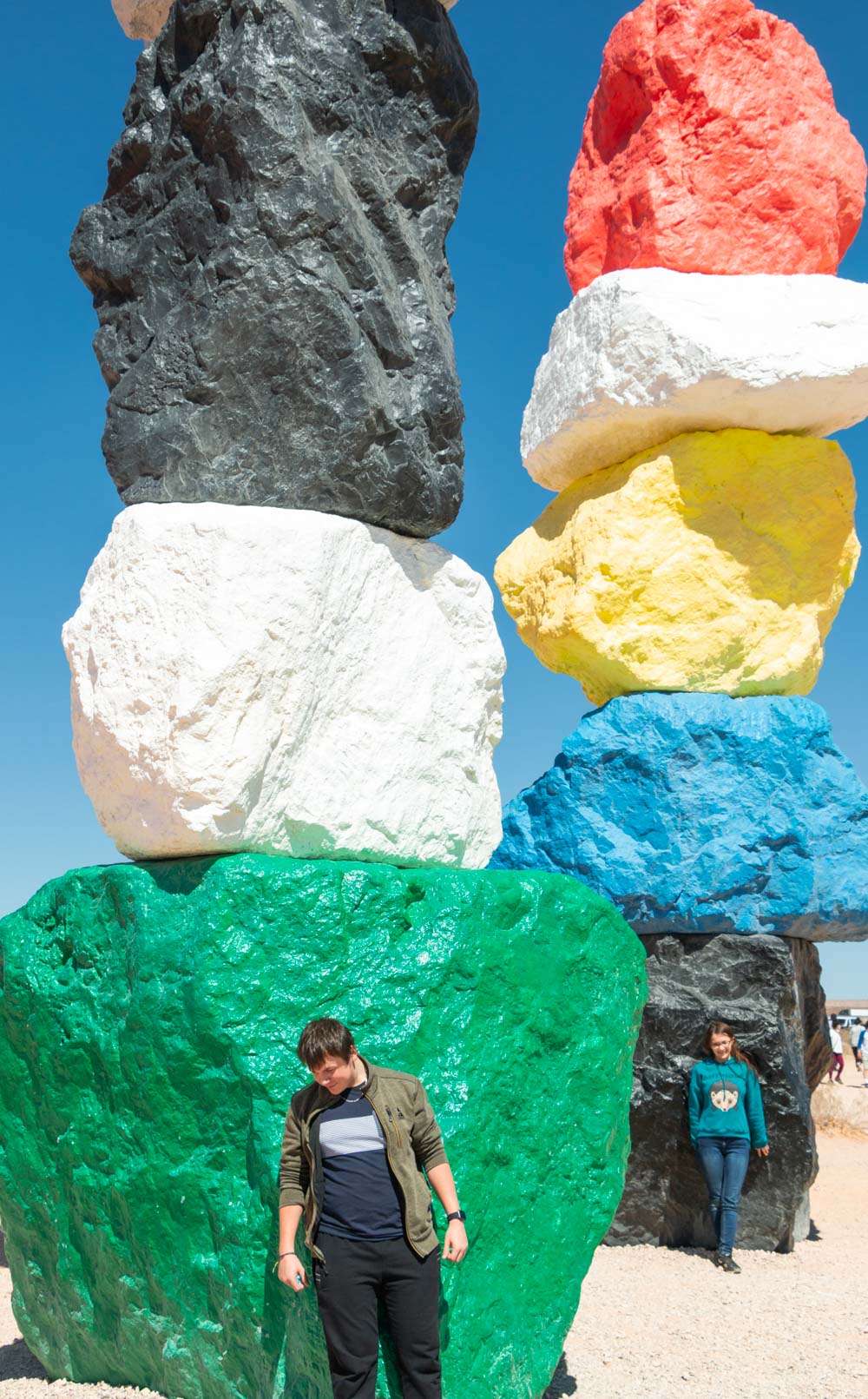
When Can You Visit Seven Magic Mountains
You can visit Seven Magic Mountains all year round, 24 hours a day. Nevada’s weather doesn’t impose any serious inconveniences for its guests. Summers in the desert, however, are hot. You may want to stop at Seven Magic Mountains in the early morning or late afternoon during this time.
Furthermore, plan your trip to the art installation in advance during the monsoon season, which usually falls between mid-June and September. Thunder, lightning, and heavy afternoon rains are normal at this time.
TIP: Visit Seven Magic Mountains on a weekday if it’s possible. The place is usually busy on weekends and holidays.
How Much Time Do You Need for a Visit to Seven Magic Mountains?
A visit to Seven Magic Mountains can last from 15 minutes to half a day, depending on crowds, weather conditions, and purpose of your trip. If you arrive on a busy day and want to photograph the artwork from all possible angles, plan to spend at least a couple of hours at the installation.

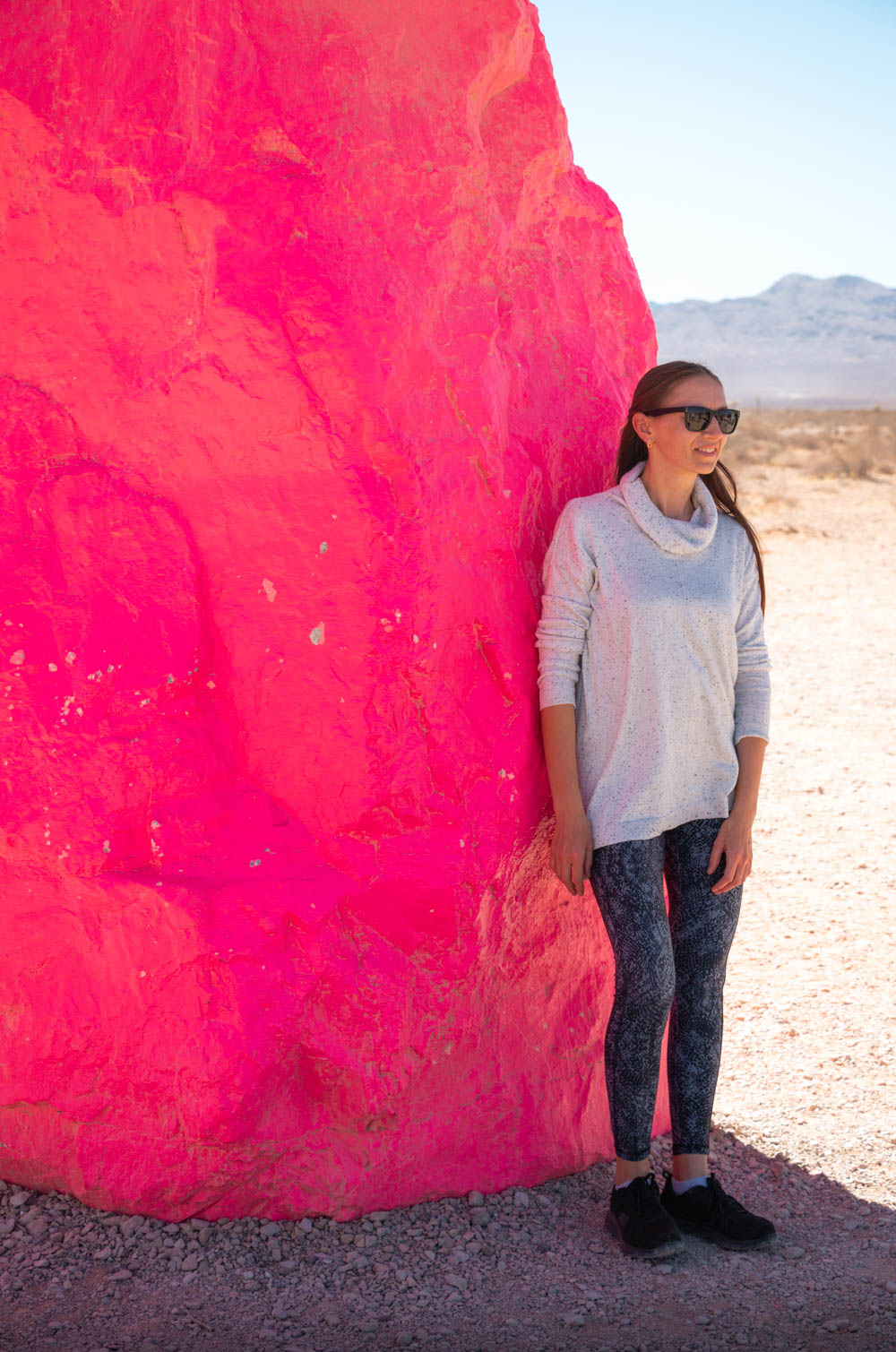
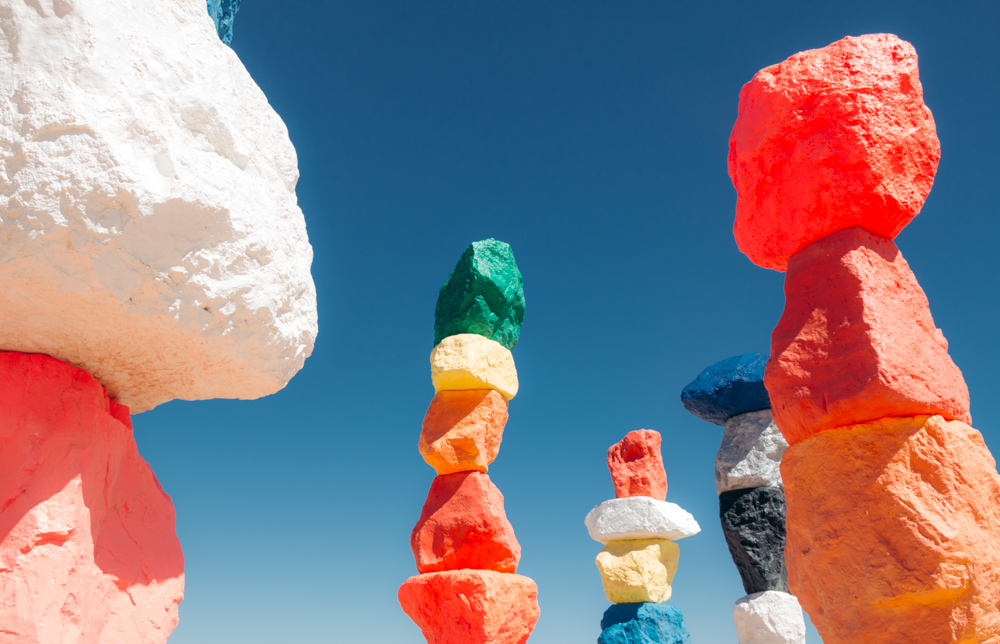
Admission
A visit to Seven Magic Mountains won’t cost you a penny. There is no admission fee. Restrooms and other facilities are also absent. During our weekend visit to Seven Magic Mountains, however, a temporary restroom and a snack stand sat near an unpaved walking path to the installation.
Visit Seven Magic Mountains on a Tour
To be honest, if you drive, don’t even bother to book a tour. The place is located less than 30 minutes away from Las Vegas. Furthermore, considering its small size and interpretive signage, you can visit Seven Magic Mountains and conduct a self-guided tour without any help. If you want to check out a few other landmarks in the area, consider booking a guided tour.
Is Seven Magic Mountains Worth a Visit?
A visit to Seven Magic Mountains is an absolute must for any art enthusiast. Furthermore, it’s a welcoming change in scenery for almost every visitor of Las Vegas.
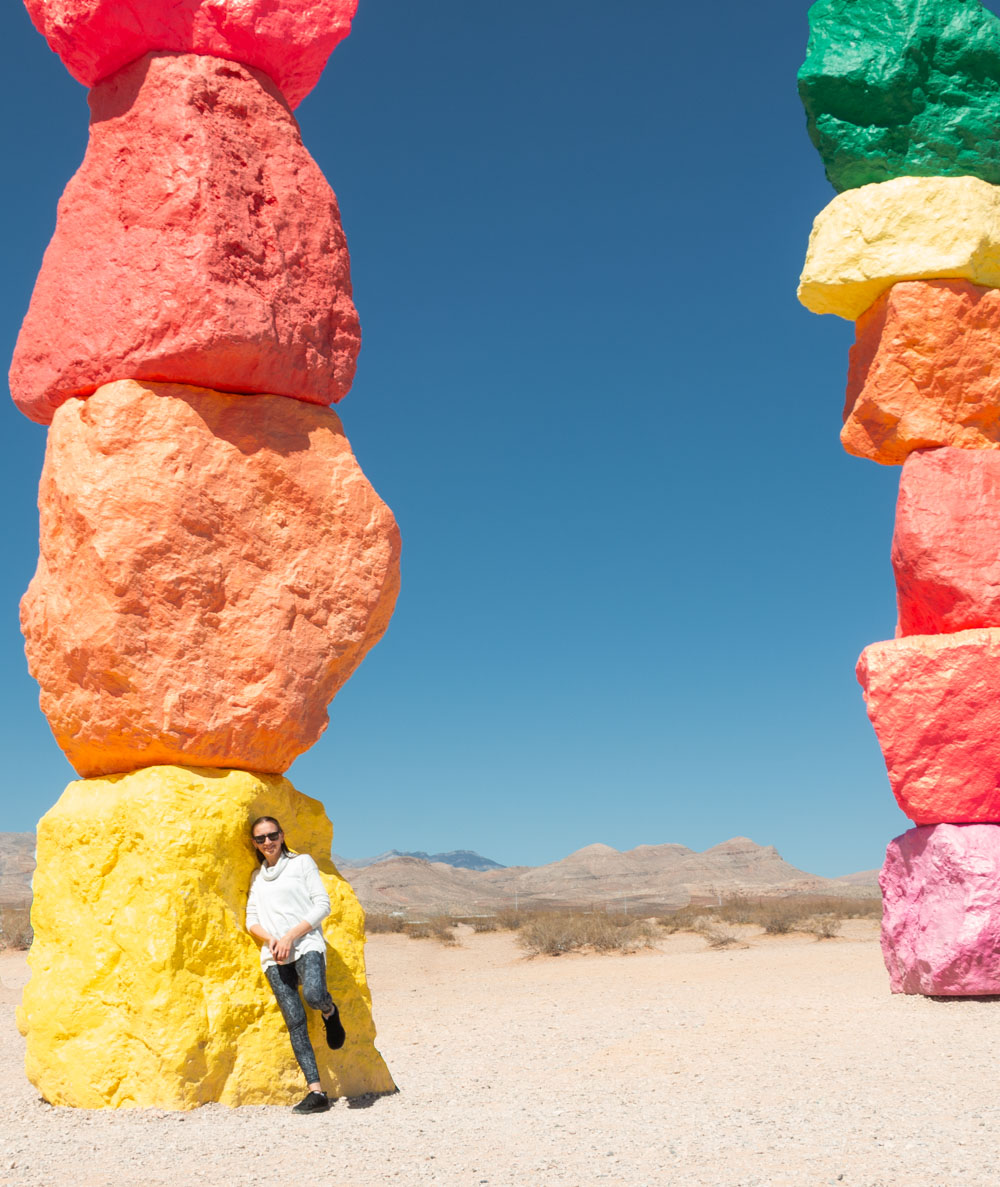
Helpful Tips for Visiting Seven Magic Mountains
- Bring plenty of water and snacks. You are going to the desert. Be sure to stay hydrated even during a quick stop at Seven Magic Mountains. The daytime temperatures in the summer can reach 104 degrees Fahrenheit. Fresh fruits or snacks also come in handy, especially if you plan to spend several hours photographing the artwork.
- Wear sunscreen. Again, protect yourself and your skin. Slather a generous amount of sunscreen on your skin and bring a cap or wide-brimmed hat for extra protection.
- Don’t disturb desert flora and fauna. Remember, you are a visitor here. Be respectful of the desert flora and fauna. No catching or holding insects, including endangered desert tortoise, is allowed when visiting Seven Magic Mountains.
- Beware of snakes. Venomous snakes can be found near Seven Magic Mountains. So keep a watchful eye on the area during your visit.
- Don’t climb or vandalize the artwork. Sitting on top of one of the colorful boulders looks good in pictures. Or wait… Does it? Every responsible visitor of Seven Magic Mountains surely understands how much work and effort have been put into the installation. Not only does any foolishness get you zero respect, but you may also be panelized. Violators are subject to criminal penalties, fines, and payments of restitution.
- Photography. Visit Seven Magic Mountains and photograph its eccentric shapes and hues. While there are no restrictions for photography for private use, commercial photo shoots are strictly prohibited.
- Visit Seven Magic Mountains with pets. Pets are welcome. Be sure to keep them on leash, though.
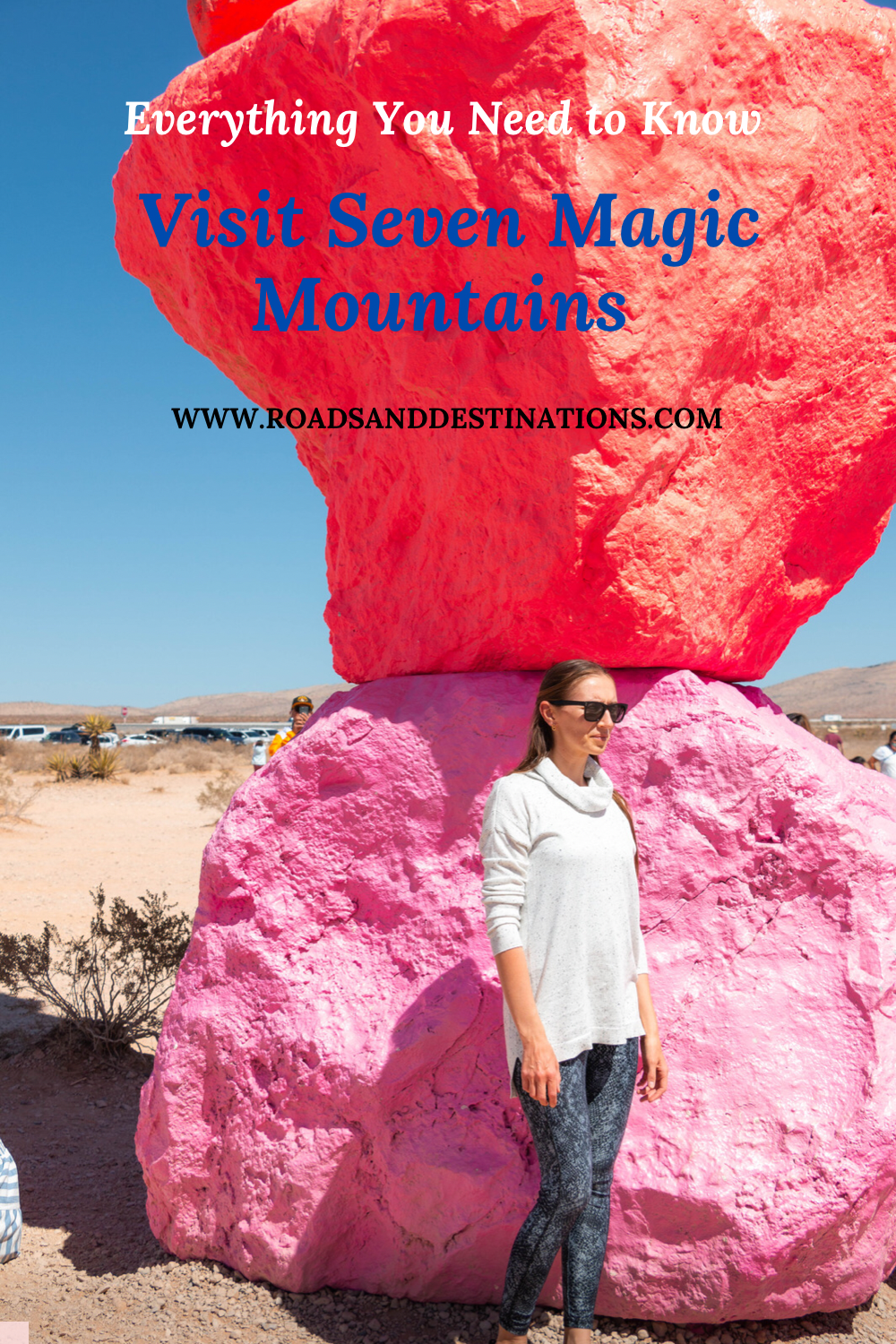
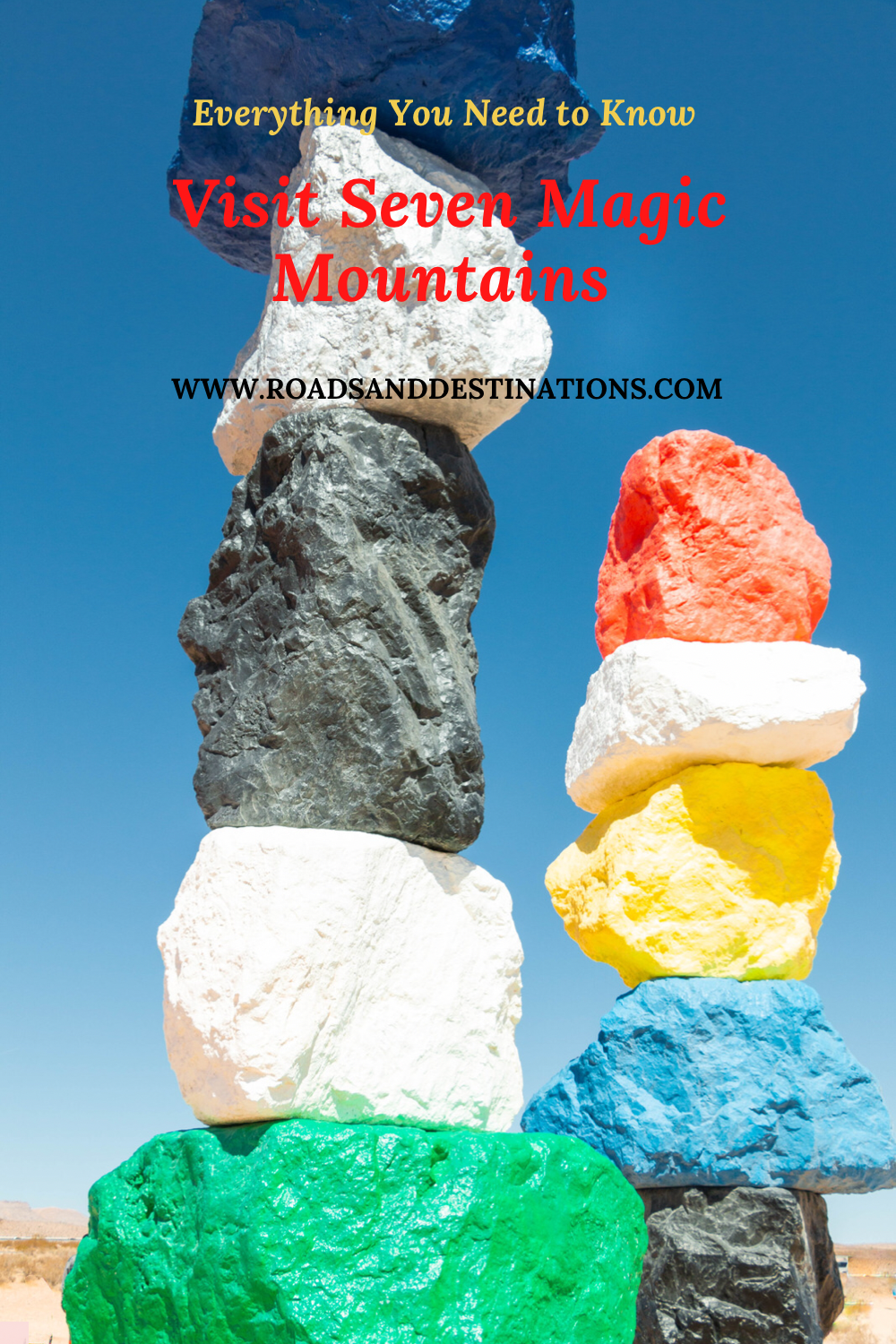
Nice overview of Seven Magic Mountains! Does visiting the installation require a long hike, or is it easily accessible by car? Also, any tips on the best time of day to go?
Author
Thank you. You don’t need to hike. The parking lot is right in front of the installation. Mornings and late afternoons when there are fewer people around are the best times to visit the Seven Magic Mountains area.